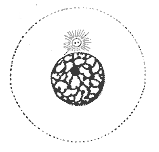
| Home | Sources Directory | News Releases | Calendar | Articles | | Contact | |
Interphase

Interphase is the phase of the cell cycle in which the cell spends the majority of its time and performs the majority of its purposes including preparation for cell division. In preparation for cell division it increases its size and makes a copy of its DNA. Interphase is also considered to be the 'living' phase of the cell, in which the cell obtains nutrients, grows, reads its DNA, and conducts other "normal" cell functions. The majority of eukaryotic cells spend most of their time in interphase. Interphase does not describe a cell that is merely resting but is rather an active preparation for cell division. A common misconception is that interphase is the first stage of mitosis, however, since mitosis is the division of the nucleus, prophase is actually the first stage.[1]
In interphase, the cell gets itself ready for mitosis or meiosis. Somatic cells, or normal diploid cells of the body, go through mitosis in order to reproduce themselves through cell division. Whereas diploid germ cells (i.e. primary spermatocytes and primary oocytes) go through meiosis in order to create haploid gametes (i.e. sperm and ova) for the purpose of sexual reproduction.
Contents |
[edit] Identification
Under a microscope interphase can be visually recognized because the nuclear membrane is still intact, the chromatin has not yet condensed and chromosomes are not visible, though the nucleolus may be visible as an enlarged dark spot. The centrioles and spindle fibers are also not yet visible, though the centrosome which contains and organizes them may be visible near the nucleus.
[edit] Stages of interphase
There are three stages of interphase, each phase ends when a cellular checkpoint checks the accuracy of the stage's completion before proceeding to the next. The stages of interphase are:
- G1 (Gap 1), in which the cell grows and functions normally. During this time, a lot of protein synthesis occurs and the cell grows (to about double its original size) - more organelles are produced, increasing the volume of the cytoplasm. If the cell is not to divide again, it will remain in this phase.
- Synthesis (S), in which the cell duplicates its DNA (via semiconservative replication).
- G2 (Gap 2), in which the cell resumes its growth in preparation for mitosis.
- Additionally some cells which do not divide often or ever, enter a stage called G0 (Gap zero), which is either a stage separate from interphase or an extended G1 phase which follows the restriction point, a cell cycle checkpoint found at the end of G1.
The duration of time spent in interphase and in each stage of interphase is variable and depends on both the type of cell and the species of organism it belongs to. Most cells of adult mammals spend about 20 hours in interphase, this accounts for about 90% of the total time involved in cell division.[2]
[edit] Interphase within sequences of cellular processes
[edit] Interphase and the cell cycle
When G2 is completed the cell enters a relatively brief period of nuclear and cellular division, composed of mitosis and cytokinesis respectively. After the successful completion of mitosis and cytokinesis both resulting daughter cells then re-enter G1 of interphase.
In the cell cycle, interphase is proceeded by telophase and cytokinesis of the M phase. Alternatively, interphase is sometimes interrupted by G0 phase, which, in some circumstances, may then end and be followed by the remaining stages of interphase. After the successful completion of the G2 checkpoint, the final checkpoint in interphase, the cell proceeds to prophase, or in plants to preprophase, which is the first stage of mitosis.
G0 phase is viewed as either an extended G1 phase where the cell is neither dividing nor preparing to divide and or as a distinct quiescent stage which occurs outside of the cell cycle.[3]
[edit] Interphase and other cellular processes
In gamete production interphase is succeeded by meiosis. In programmed cell death interphase is followed or preempted by apoptosis.
[edit] References
- ^ The Cell Cycle & Mitosis Tutorial The Biology Project - Cell Biology. University of Arizona.
- ^ Mader, S. S. 2007. Biology 9th Ed. McGraw Hill Higher Education, Boston, MA, USA. ISBN 978-0-07-325839-3
- ^ Re: Are the cells in the G0 (g zero) phase of mitosis really suspended? Erin Cram, Grad student, Molecular and Cellular Biology, University of CA, Berkeley. 1999. MadScience Network. Question ID 942142089.Cb.
|
||||||||||||||||
|
SOURCES.COM is an online portal and directory for journalists, news media, researchers and anyone seeking experts, spokespersons, and reliable information resources. Use SOURCES.COM to find experts, media contacts, news releases, background information, scientists, officials, speakers, newsmakers, spokespeople, talk show guests, story ideas, research studies, databases, universities, associations and NGOs, businesses, government spokespeople. Indexing and search applications by Ulli Diemer and Chris DeFreitas.
For information about being included in SOURCES as a expert or spokesperson see the FAQ . For partnerships, content and applications, and domain name opportunities contact us.

